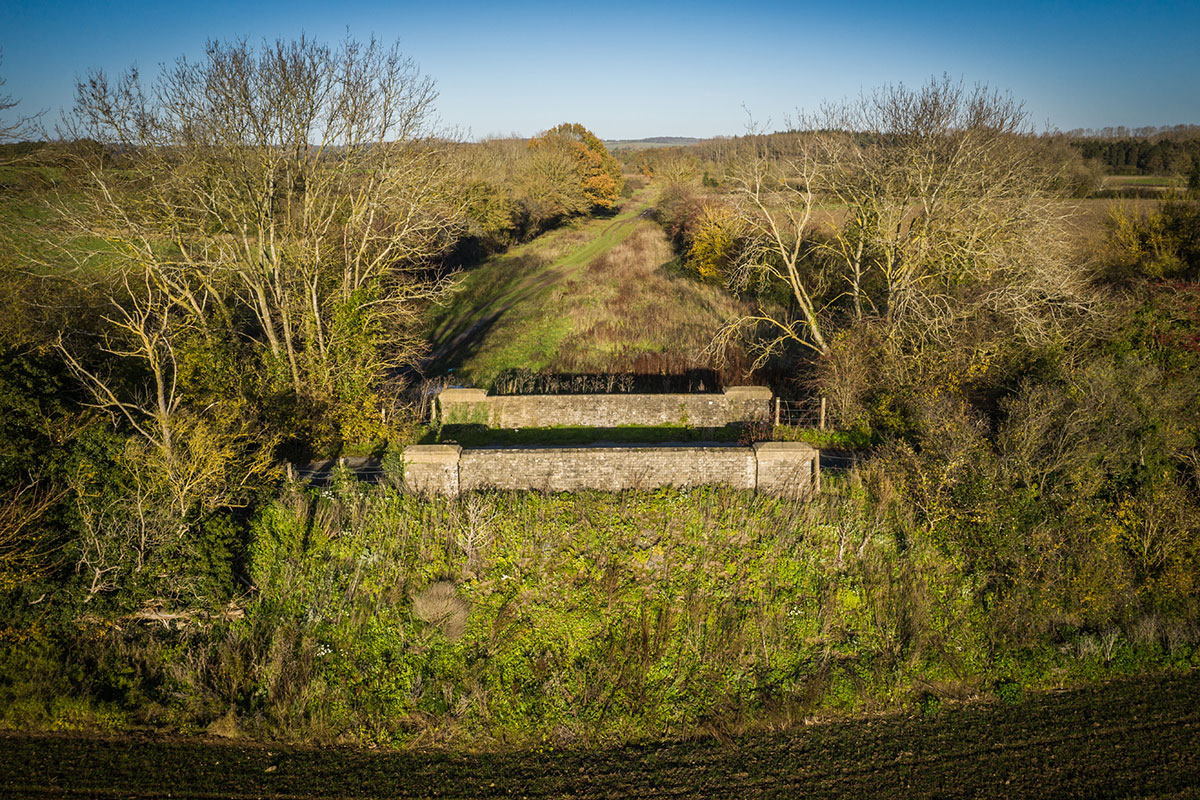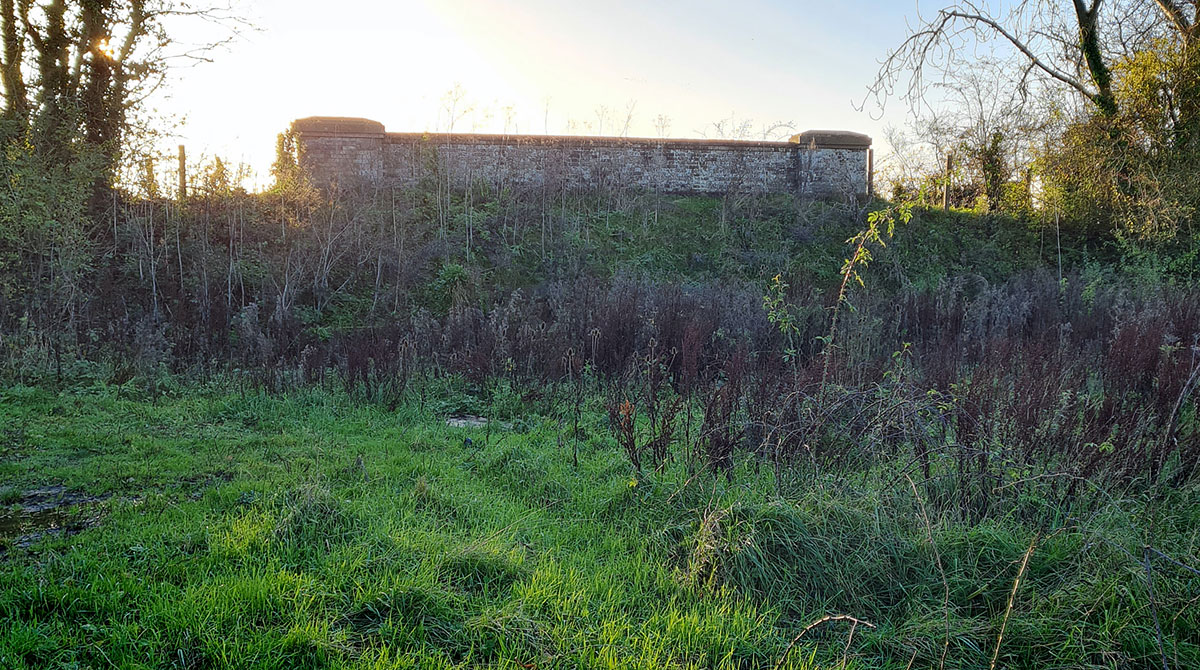enforcement notice appeal

Congham bridge enforcement notice appeal: link to the Planning Inspectorate
Select 'Make representation' to sumbit comments before 8 March 2024
The bridge carrying St Andrew’s Lane over the former Midland & Great Northern Joint Railway at Congham, Norfolk was an elaborate and eye-catching structure. Dating from 1926, it was the last surviving example of a bridge built entirely using a system of modular concrete components developed by pioneering engineer William Marriott who had brought together his previous work on block casting and concrete reinforcement.
.jpg)
PHOTO: M&GN TRUST
But the structure was infilled by National Highways in 2021 without any thought to its role as a reminder of our past, an important feature within the local landscape or an infrastructure asset with potential future value. The company also didn’t consider the environmental impacts of quarrying, processing, transporting and placing more than a thousand tonnes of aggregate and concrete in a rural setting.
Only two partial Marriott system bridges now survive in Norfolk.

PHOTO: THE HRE GROUP
National Highways saw this structure as a liability and wanted rid of it. To do so, it exploited permitted development rights applying only to temporary works in emergency situations. But the infilling was intended to be permanent and took place 17 months after the company notified the local planning authority of its plans. No evidence of an emergency was provided; the bridge's condition was recorded as 'Fair' in formal engineering records, although NH misrepresented this, persistently claiming that the bridge was in "very poor condition".
Because National Highways breached those permitted development rights by failing to seek written consent for retention of the infill beyond the maximum 12-month period, the Borough Council of King’s Lynn & West Norfolk asked the company to submit a retrospective planning application. It was refused on 2 October 2023 and, a few weeks later, an Enforcement Notice was issued requiring removal of the infill by 10 April 2024. However, National Highways has appealed to the Planning Inspectorate against the Council's actions. The matter will go to a public inquiry where the future of the historic bridge will be decided.
National Highways' behaviour undermines trust and confidence in public bodies. Its decision to infill the bridge was taken without a full and proper evaluation of the structure's broader social value and without any consultation with the local community. We believe the bridge should be sympathetically repaired as an important heritage asset, restoring its availability for possible future repurposing.
Members of the public can make their views known about the appeal by submitting representations to the Planning Inspectorate, quoting reference number APP/V2635/C/24?3336603, before 8 March 2024. Below is a link to the online portal.
Congham bridge enforcement notice appeal: link to the Planning Inspectorate
Select 'Make representation' to sumbit comments before 8 March 2024
- Policy CS06 Development in Rural Areas which states that “The strategy for rural areas is to...maintain local character and a high quality environment...”
- Policy CS08 Sustainable Development which states that “All new development in the borough should be of high quality design. New development will be required to demonstrate its ability to protect and enhance the historic environment…achieve high standards of sustainable design.”
- Policy CS12 Environmental Assets: Green Infrastructure, Historic Environment, Landscape Character, Biodiversity and Geodiversity which states that “Development should seek to avoid, mitigate or compensate for any adverse impacts on biodiversity, geodiversity and heritage as well as seeking to enhance sites through the creation of features of new biodiversity, geodiversity and heritage interest. The design of new development should be sensitive to the surrounding area…”
The Council also has a policy, C.14 DM15 - Environment, Design and Amenity, which states that “One of the Government’s key aims in national planning policy is to create sustainable development. Proposals that are responsive to their location and consider the layout, materials, parking, landscaping and how people will use the space early in their design are likely to have a positive impact on amenity and will help to deliver sustainable development.”
The National Planning Policy Framework also provides grounds against the appeal, amongst which are:
- Paragraph 135(c) which states that “Planning policies and decisions should ensure that developments…are sympathetic to local character and history, including the surrounding built environment and landscape setting, while not preventing or discouraging appropriate innovation or change (such as increased densities);”
- Paragraph 195 which states that “Heritage assets…are an irreplaceable resource, and should be conserved in a manner appropriate to their significance, so that they can be enjoyed for their contribution to the quality of life of existing and future generations.”
- Paragraph 209 which states that “In weighing applications that directly or indirectly affect non-designated heritage assets, a balanced judgement will be required having regard to the scale of any harm or loss and the significance of the heritage asset.”
Congham bridge enforcement notice appeal: link to the Planning Inspectorate
Select 'Make representation' to sumbit comments before 8 March 2024
Congham bridge: Officer's Report
The report produced by the Borough Council of King's Lynn & West Norfolk's planning officer summarising the issues raised by National Highways' retrospective planning application to retain the 'emergency' infill at St Andrew's Lane bridge, Congham.
September 2023: PDF (663kB)
Congham bridge: Decision Notice
The Decision Notice issued by the Borough Council of King's Lynn & West Norfolk following its planning committee's unanimous rejection of National Highways' retrospective planning application to retain the 'emergency' infill at St Andrew's Lane bridge, Congham.
October 2023: PDF (187kB)
Congham bridge: Enforcement Notice
The Enforcement Notice issued by the Borough Council of King's Lynn & West Norfolk following its planning committee's unanimous rejection of National Highways' retrospective planning application to retain the 'emergency' infill at St Andrew's Lane bridge, Congham.
November 2023: PDF (1.5MB)
Congham bridge: The HRE Group appeal representation
A document submitted to the Planning Inspectorate in response to National Highways' appeal against the Enforcement Notice to remove the infill from St Andrew's Lane bridge, Congham.
February 2024: PDF (2MB)
About Us
The HRE Group is an alliance of walking, cycling and heritage campaigners, engineers and greenway developers who regard the Historical Railways Estate’s structures to be strategically valuable in the context of building a better future.
Last updated 21 October 2025
© 2025 The HRE Group




